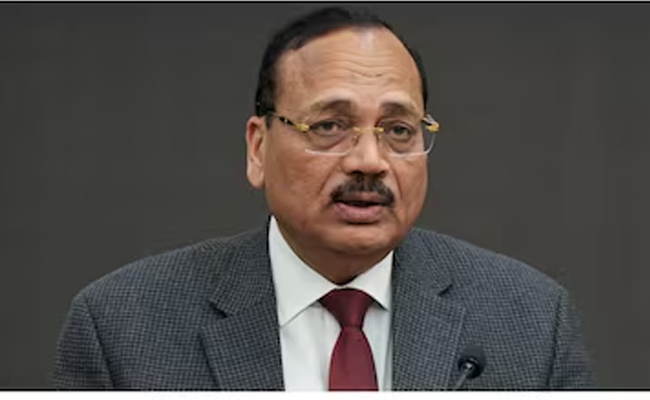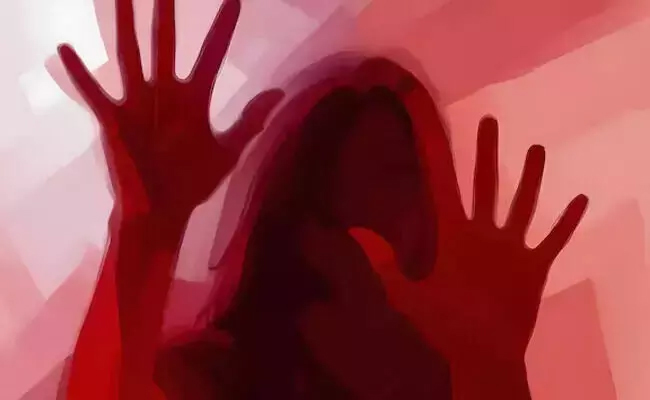Mumbai, May 17: Regulating salt consumption is key to prevent hypertension, which is associated with an increased risk of heart disease, heart attack, stroke and heart failure, say experts.
Hypertension, also known as high or raised blood pressure, is a condition in which the blood vessels have persistently raised pressure.
To lower the risk of heart disease, adults should reduce sodium intake to less than 2 grams a day, or the equivalent of about one teaspoon of table salt, according to the World Health Organization (WHO).
"Hypertension can lead to cardiovascular diseases. The rise in blood pressure caused by eating too much salt may damage the arteries leading to the heart," Vijay D'Silva, Director at the Asian Heart Institute, said in statement.
According to a recent study, published in the journal Hypertension, about half of adults living in Asia are suffering from the high blood pressure.
While lifestyle factors, including diet and stress, are behind the high hypertension rates in Asia, one common problem is high salt intake, the study showed.
Asians not only tend to have diets high in sodium, but they are genetically more sensitive to sodium, the researchers said.
"Raised blood pressure due to high salt consumption is the biggest single contributing risk factor for non-communicable diseases and damage to your kidney," explained Bhupendra Gandhi of the NGO Amar Gandhi Foundation.
Previously, it was believed that eating high amounts of fruit and vegetables might help counteract the effect of high salt on blood pressure.
However, another study led by researchers from the Imperial College London and Northwestern University, showed that people eating higher amounts of salt had higher blood pressure -- no matter how healthy a person's overall diet.
Hypertension can also affect fertility in both males and females, says Rajalaxmi Walavalkar of Cocoon Fertility.
"Anyone with hypertension is at an increased risk of infertility. A high salt diet leading to high blood pressure can result in delayed puberty and even impact reproductive health," Walavalkar noted.
Besides affecting the heart and fertility, hypertension can affect the skin too, the health experts said.
"High blood pressure can harden your arteries, which decreases the flow of blood and oxygen. An impairment of the flow of oxygen, to an organ such as your face, can cause your skin to dry and wrinkles faster which can make one look less youthful," said Amit Karkhanis - Medical Cosmetologist and founder of Dr Tvacha clinic.
Hypertension is also known to cause trouble sleeping which leads to signs of premature ageing (fine lines, uneven pigmentation and reduced elasticity).
Reducing salt consumption in everyday life, including fried foods, processed foods, can not only curb the problem of hypertension but also save multiple organs from damage and pave way for a healthy life.
Let the Truth be known. If you read VB and like VB, please be a VB Supporter and Help us deliver the Truth to one and all.
Jaisalmer (PTI): Pushing for a "unified judicial policy", Chief Justice of India Surya Kant on Saturday said technology can help align standards and practices across courts, creating a "seamless experience" for citizens, regardless of their location.
He said high courts -- due to the federal structure -- have had their own practices and technological capacities, and "regional barriers" can be broken down with technology to create a more unified judicial ecosystem.
Delivering the keynote address at the West Zone Regional Conference in Jaisalmer, Kant proposed the idea of a "national judicial ecosystem" and called for an overhaul of India's judicial system with the integration of technology.
"Today, as technology reduces geographical barriers and enables convergence, it invites us to think of justice not as regional systems operating in parallel, but as one national ecosystem with shared standards, seamless interfaces, and coordinated goals," he said.
He emphasised how the role of technology in the judiciary has evolved over time.
"Technology is no longer merely an administrative convenience. It has evolved into a constitutional instrument that strengthens equality before the law, expands access to justice, and enhances institutional efficiency," he said, highlighting how digital tools can bridge gaps in the judicial system.
Kant pointed out that technology enables the judiciary to overcome the limitations of physical distance and bureaucratic hurdles.
"It allows the judiciary to transcend physical barriers and bureaucratic rigidities to deliver outcomes that are timely, transparent and principled," he said, adding that the effective use of technology can modernise the delivery of justice and make it more accessible to citizens across the country.
The CJI called for implementing a "unified judicial policy".
He said India's judicial system has long been shaped by its federal structure, and different high courts have their own practices and technological capacities.
"India's vast diversity has led to different high courts evolving their own practices, administrative priorities and technological capacities. This variation, though natural in a federal democracy, has resulted in uneven experiences for litigants across the country," he said.
Kant underscored that predictability is crucial for building trust in the judicial system.
"A core expectation citizens place upon the courts is predictability," he said, adding that citizens should not only expect fair treatment but also consistency in how cases are handled across the country.
He pointed to the potential of technology in improving predictability.
"Technology enables us to track systemic delays and make problems visible rather than concealed," he said.
By identifying areas where delays occur, such as in bail matters or cases involving certain types of disputes, courts can take targeted action to address these issues and improve efficiency, Kant said.
The CJI explained that data-driven tools could identify the reasons behind delays or bottlenecks, allowing for faster, more focused solutions.
"Technology enables prioritisation by flagging sensitive case categories, monitoring pendency in real time and ensuring transparent listing protocols," he said.
Justice Surya Kant also discussed the importance of prioritising urgent cases where delays could result in significant harm. He highlighted his recent administrative order that ensures urgent cases, such as bail petitions or habeas corpus cases, are listed within two days of curing defects.
"Where delay causes deep harm, the system must respond with urgency," he stated, explaining that technology can help courts identify and expedite such cases.
Kant also raised the issue of the clarity of judicial decisions.
He noted that many litigants, despite winning cases, often struggle to understand the terms of their judgment due to complex legal language.
"Although the orders had gone in their favour, they remained unsure of what relief they had actually secured because the language was too technical, vague or evasive to understand," he said.
He advocated for more uniformity in how judgments are written.
"A unified judicial approach must therefore extend to how we communicate outcomes," he said.
The CJI also discussed the role of AI and digital tools in improving case management. He pointed to the potential of AI-based research assistants and digital case management systems to streamline judicial processes.
"Emerging technological tools are now capable of performing once-unthinkable functions. They can highlight missing precedent references, cluster similar legal questions, and simplify factual narration," he said, explaining how these technologies can help judges make more consistent decisions.
He also highlighted tools like the National Judicial Data Grid and e-courts, which are already helping to standardise processes like case filings and tracking.
Kant reiterated that the integration of technology into the judicial process is not just about improving efficiency but about upholding the integrity of the system and strengthening public trust.
"The measure of innovation is not the complexity of the software we deploy, but the simplicity with which a citizen understands the outcome of their case and believes that justice has been served," he said.





